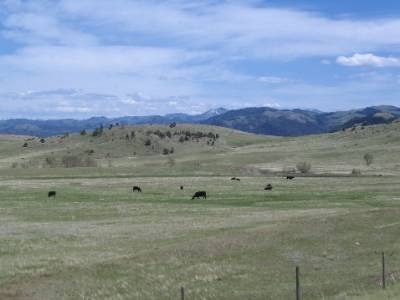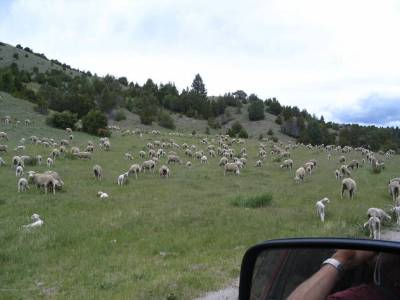Economic Impact of Noxious Weeds on Private Grazing Lands
(by Kate Fuller, Stacy Davis, Jane Mangold, and Matt Rinella)

Jane Mangold, MSU.
Introduction
Successful management of invasive plants is critical to maintaining healthy agricultural and wildland systems and relies on adequate funding. Adequate funding to achieve such goals, however, hinges on a clear understanding of what is being lost to weed invasions—for example, livestock forage production—and what is being spent to control weeds. Published information on the economic losses caused by invasive weeds is scarce. The most recent, in-depth economic analyses of noxious weeds in Montana occurred some 20 years ago.
Our study
We developed a 16-question survey concerning noxious weed management and associated costs. The target audience for the survey was livestock producers who were grazing livestock on privately-owned rangeland in Montana, and the survey was administered winter 2015-2016. Survey responses were received from 129 people in 45 counties, with the majority of respondents grazing cattle (88%) followed by sheep and horses (29% and 23%, respectively). The majority of the survey referred to the largest contiguous block of privately owned or leased land on which respondents graze livestock, which we refer to as “Block A.” The average size of Block A was 5,055 acres. The total, respondent-estimated coverage of Block A by noxious weeds was 79,730 acres, or roughly 12% of total acres represented in the survey.
The most common noxious weeds were Canada thistle, leafy spurge, and houndstongue. However, leafy spurge, Canada thistle, and knapweed (spotted and diffuse) were reported as causing the largest decreases in livestock production. Only 6% reported having no noxious weeds on Block A. Using information from other studies where field data estimated forage loss due to two state-listed noxious weeds, we estimate the average reduction in biomass resulting from the reported presence of spotted knapweed and leafy spurge at 0.7 and 0.8%, respectively. We estimate the corresponding average value of the reduction in stocking rate is $0.40 per acre per year, or $2,022 for the average Block A.
The top three strategies used to control established noxious weeds on Block A were chemical control (88% of respondents), grazing (29% of respondents), and biological control (27% of respondents). About 46% of respondents utilized more than one control strategy or integrated weed management.

Jane Mangold, MSU.
Respondents’ average total cost of noxious weed control, including labor and materials, was estimated to be $0.89 per acre per year, or $4,499 per year for the average Block A. However, costs of noxious weed control ranged a great deal across individuals—from $0 to over $40 per acre. We estimate the total economic loss over all of Block A land, including both the costs of control and the costs of foregone production, to be $1.29 per acre per year, or $6,521 per year for the average Block A. However, it is important to note that Block A acreage represents only a small percentage of privately owned land in Montana. In addition, the per-acre numbers would undoubtedly be higher if we were to incorporate the reduction in biomass production resulting from weeds other than leafy spurge and spotted knapweed, the two species for which we have biomass reduction models.
The project was funded with a grant from the Montana Noxious Weed Trust Fund (MDA Grant 2015-006).
